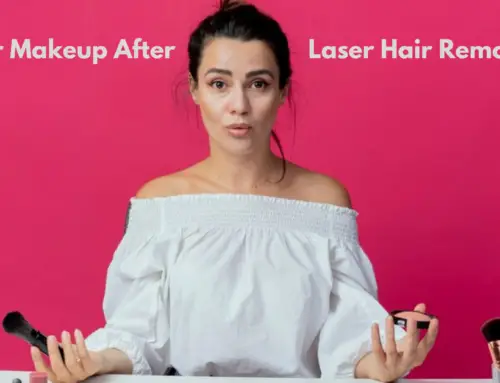Contouring before or after foundation depends on personal preference and the desired outcome. Professionals typically contour after foundation to create a more natural look by blending the contour seamlessly into the skin. However, some makeup artists prefer to contour before foundation to have more control over the intensity of the contour. Experiment with both methods to find what works best for you and achieve the desired effect.
When it comes to achieving the perfect makeup look, the question of whether to contour before or after foundation is a hot topic in the beauty world. Contouring has become an essential step in many people’s makeup routines, but the order in which it should be done can be confusing. So, what’s the best way to go about it? Let’s delve into this controversial debate and shed some light on the matter.
The practice of contouring can be traced back to ancient civilizations, where both men and women used various techniques to enhance their features. Today, contouring has gained immense popularity thanks to the rise of social media makeup trends. While some argue that contouring should be done before foundation to create a natural-looking sculpted effect, others believe that applying foundation first helps to create a seamless base for the contouring process. With no definitive right or wrong answer, it ultimately comes down to personal preference and the desired outcome. Whatever method you choose, the key is to blend and build gradually to achieve a flawless and natural-looking contour.


Understanding the Contouring Process
Contouring has become a popular makeup technique that helps enhance and define facial features. It involves using different shades of makeup to create shadow and highlight areas of the face, creating the illusion of sharper cheekbones, a more defined jawline, and a slimmer nose. However, there is often confusion about whether to contour before or after applying foundation.
To understand the answer to this question, it’s important to first understand the purpose of contouring and how it works. The main goal of contouring is to create dimension and depth on the face, while foundation is used to create a smooth and even base.
Link: can you put makeup on after botox
When it comes to the order in which to apply contour and foundation, there are different schools of thought. Some makeup artists prefer to first apply contour and then blend it out before applying foundation, while others like to apply foundation first and then use contour to add dimension on top. Both methods can achieve great results, so it ultimately comes down to personal preference and the desired outcome.
Contouring Before Foundation
Contouring before foundation has some benefits and can work well for those who want a more natural and subtle look. To contour before applying foundation, follow these steps:
- Start with a clean and moisturized face.
- Apply a thin layer of primer to create a smooth canvas for makeup application.
- Using a contouring powder or cream, apply the darker shade to the areas you want to create shadows, such as the hollows of your cheeks, the sides of your nose, and the jawline.
- Blend the contouring product using a brush or sponge, making sure to blend it seamlessly into the skin.
- Once the contour is blended, apply foundation to the rest of your face, including the contoured areas. This will help create a more natural, blended look.
- Set your foundation with a light dusting of translucent powder.
- Continue with the rest of your makeup routine, such as applying blush, highlighter, and setting spray.
Benefits of Contouring Before Foundation
Contouring before foundation can have several benefits:
- More control: Contouring before foundation allows you to have more control over the intensity of the contour. You can easily blend out the product for a more natural appearance.
- Blended look: Applying foundation over the contour helps blend the product seamlessly into the skin, creating a more unified and natural finish.
- Customizable: You can customize the intensity and placement of the contour based on your individual face shape and desired look.
Drawbacks of Contouring Before Foundation
While contouring before foundation can work well, there are a few drawbacks to consider:
- Product buildup: Applying contouring product before foundation can lead to a buildup of product, especially if you’re using cream formulas. This can make the makeup feel heavier on the skin.
- Blending challenges: If not blended properly, the contouring product can be more difficult to blend seamlessly into the foundation, resulting in a less natural appearance.
Contouring After Foundation
Contouring after foundation is another popular technique that can create more intense and defined contours. Here’s how to contour after applying foundation:
- Start with a clean and moisturized face.
- Apply a thin layer of primer to create a smooth base for your makeup.
- Apply foundation all over your face, including the areas where you want to contour.
- Using a contouring powder or cream, apply the darker shade to the desired areas, such as the hollows of your cheeks, the sides of your nose, and the jawline.
- Blend the contouring product using a brush or sponge, making sure to blend it seamlessly into the foundation.
- Set your foundation and contour with a light dusting of translucent powder.
- Apply the rest of your makeup, such as blush, highlighter, and setting spray.
Benefits of Contouring After Foundation
Contouring after foundation offers several advantages:
- Intense contour: Contouring after foundation allows you to create a more intense and defined contour, making your features stand out.
- Easier blending: Since the contour is applied on top of the foundation, it’s easier to blend the product seamlessly into the skin for a natural and well-blended look.
- Less product buildup: Applying foundation first helps prevent the buildup of contouring products, resulting in a lighter and more comfortable feel on the skin.
Drawbacks of Contouring After Foundation
Contouring after foundation may have a few drawbacks:
- Less control: Since the foundation is already applied, there’s less control over the intensity and placement of the contour.
- More difficult to correct mistakes: If you make a mistake while contouring after foundation, it can be more challenging to fix without ruining the foundation base.
Conclusion
When it comes to whether you should contour before or after foundation, both methods can achieve great results. It ultimately depends on your personal preference and the desired outcome. If you prefer a more natural and subtle look, contouring before foundation might be the best option for you. On the other hand, if you want a more intense and defined contour, contouring after foundation is a suitable choice. Regardless of the method you choose, the most important thing is to have fun and experiment with different techniques to find what works best for you.
Link: how to do makeup in winter wedding

Frequently Asked Questions
Here are some commonly asked questions about contouring before or after foundation:
1. Should I contour before or after applying foundation?
It is generally recommended to contour before applying foundation. The purpose of contouring is to create shadows and add dimension to the face, while foundation is used to even out the skin tone and provide a base for makeup. By contouring first, you can strategically place the darker shades to create a more sculpted look, and then blend them seamlessly with the foundation for a natural finish.
Contouring after foundation can lead to a blended or diffused effect, which may not achieve the desired intensity or definition. However, every makeup artist has their own preferences and techniques, so it ultimately comes down to personal preference.
2. What products should I use for contouring before foundation?
When contouring before foundation, it is best to use cream or liquid products as they blend more seamlessly with the foundation. Cream contour sticks, liquid contour drops, or cream contour palettes are popular choices. These products can be easily blended and provide a more natural-looking contour.
However, if you prefer powder contouring, make sure to apply it lightly and gradually build the intensity. Remember to blend well to avoid any harsh lines or patches.
3. Can I contour after foundation if I want a subtle look?
Yes, if you prefer a more subtle contour, you can contour after applying foundation. This technique is often used when aiming for a more natural and soft contouring effect. However, make sure to use a light hand and blend well to achieve a seamless result.
Remember, the key to a subtle contour is to use minimal product and focus on enhancing your natural features rather than dramatically reshaping your face.
4. How do I blend the contour and foundation together?
To blend the contour and foundation together, you can use a beauty sponge, a stippling brush, or your fingers. Start by applying the foundation all over your face, including the contoured areas. Then, use gentle tapping or swirling motions to blend the contour and foundation seamlessly.
Make sure to blend well along the edges of the contour to avoid any harsh lines. And remember, the key is to blend, blend, blend until there are no visible lines or patches.
5. Are there any exceptions to contouring before foundation?
While contouring before foundation is the typical order of application, there are no hard and fast rules in makeup. Some makeup artists may prefer to contour after foundation for specific looks or techniques.
For example, if you want to create a more dramatic or editorial-style contour, contouring after foundation can allow you to layer and build up the intensity of the contour shades. This technique is often used in photoshoots or special events where a bolder contour is desired.
Contouring is a popular makeup technique that helps enhance facial features. When it comes to the order of applying contour and foundation, there are different opinions. Some experts suggest applying contour before foundation, while others recommend doing it after.
Applying contour before foundation allows for a more seamless and natural look, as it creates the illusion of shadows on the face. On the other hand, applying contour after foundation allows for more control over the intensity and placement of the contour. Ultimately, it comes down to personal preference and the desired outcome.






Leave A Comment